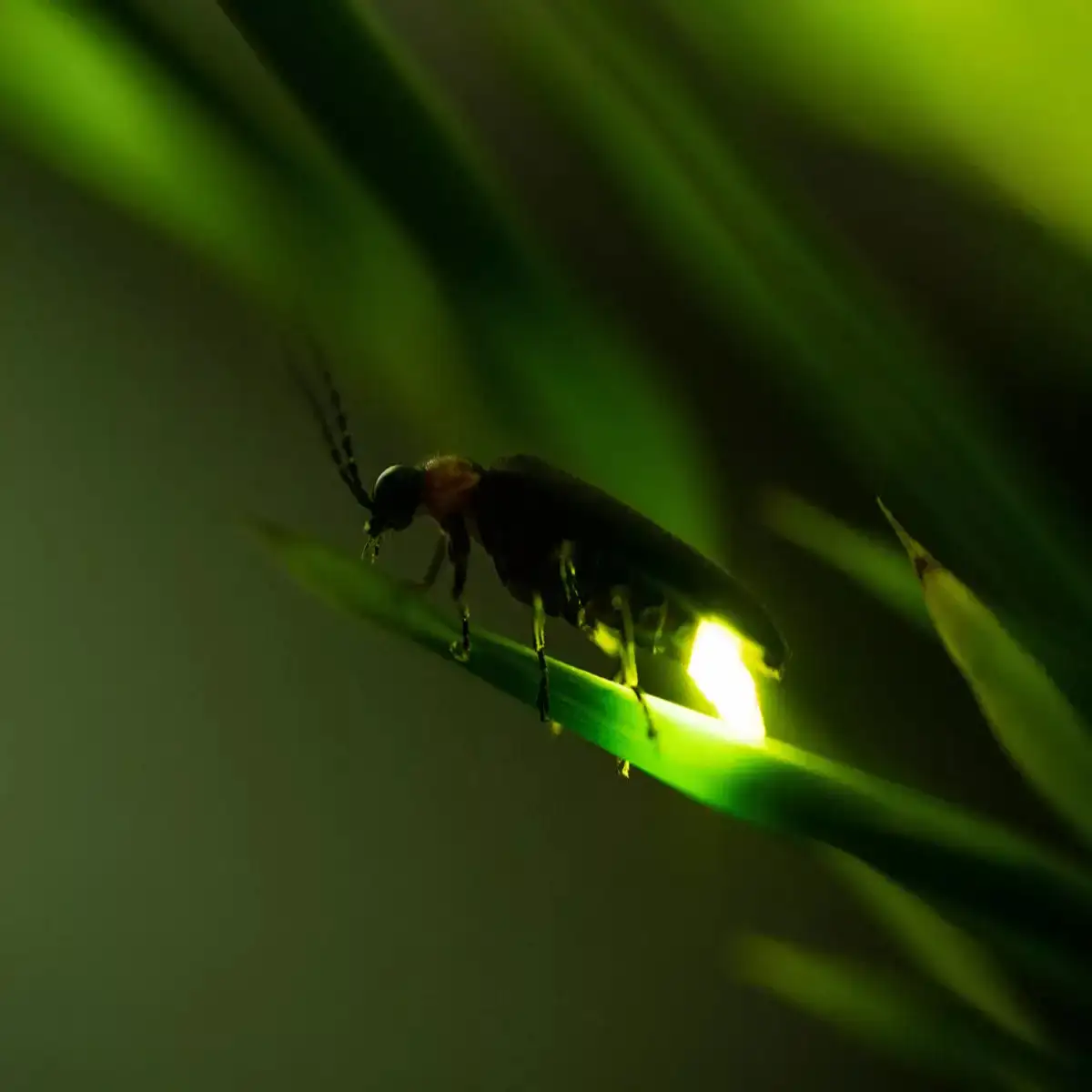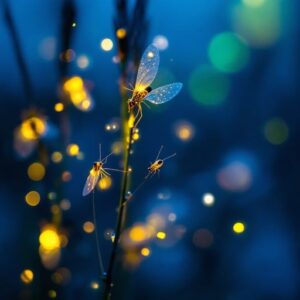
Dilshani Rathnayake


The Firefly’s Secret: More Than Just a Pretty Light
There’s nothing quite like the magic of a summer night twinkling with fireflies. But that beautiful, silent light show is so much more than just decoration. It’s a secret language, a tool for modern science, and a warning signal for our environment. Let’s uncover the incredible story behind the firefly’s glow.
What Exactly is a Firefly?
First, let’s clear something up: fireflies aren’t flies! They are actually beetles. They spend most of their lives up to two years out of sight as hungry larvae, often called “glowworms,” living in the soil and feeding on snails, slugs, and worms. The flashing adults we see live for only a few weeks, with one primary mission: to find a mate and continue the cycle.
The Science of the Spark: A Cold, Efficient Light
A firefly’s light is a marvel of natural engineering, and it’s one of nature’s most efficient systems.
This incredible chemical trick hasn’t just amazed us it has revolutionized modern medicine.
From Your Backyard to the Hospital: The Firefly’s Gift to Science
Scientists were so impressed by the firefly’s light-making process that they borrowed it. They took the gene for luciferase and used it to create an amazing tool called a “reporter gene.”
Here’s how it works in the lab:
This “glowing gene” technology is now a superhero in labs, helping scientists:
It’s a perfect example of how nature’s solutions can help solve human problems.
A Dangerous Love Language: Flashing for Survival
Back in the wild, that light is essential for survival. For fireflies, flashing is how they talk, flirt, and find a mate. Each of the over 2,000 species has its own unique flash pattern, like a secret code.
But this romantic conversation has a dark side. Some fireflies are tricksters.
Synchronized Fireflies: Nature’s Dazzling Light Orchestra
In a few special places in the world, like the Great Smoky Mountains in the USA, something even more magical happens. Thousands of male fireflies of the species Photinus carolinus gather and flash in perfect unison. For a few seconds, the entire forest pulses with light, then goes completely dark, before lighting up again. Scientists believe this incredible synchronization helps the males stand out as a group, making it easier for females to locate them in the dense forest. It’s one of nature’s most breathtaking spectacles.
The Biggest Threat: A World That’s Too Bright
Today, the firefly’s ancient language is facing its biggest challenge: light pollution. The streetlights, porch lights, and bright signs of our cities and towns are creating a constant, confusing glow.
This artificial light is drowning out the fireflies’ signals.
When you add habitat loss (from paving over fields and woods) and pesticide use to the problem, firefly populations are declining in many places. The very thing that makes them magical their light is being silenced by our own.
How You Can Help Keep the Magic Alive
The good news is that we can all be part of the solution. Here are a few simple things you can do to become a firefly guardian:
A Message from the Fireflies to the World
The firefly’s story is a quiet parable for our times. It teaches us that the most powerful voice is not always the loudest, but the one that speaks with genuine, persistent light. It shows us that true brilliance doesn’t come from overpowering everything around it, but from creating a spark of connection in the darkness.
In a world that often shouts, the firefly reminds us of the power of a gentle, consistent glow. In an era of constant, blinding noise, it demonstrates the profound importance of creating spaces of darkness and silence for it is only there that the most vital connections can be made.
So let us learn from them. Let us not be so afraid of the dark that we flood our world with a light that drowns out all other voices. Instead, let us have the courage to sometimes turn off our own lights both literal and metaphorical—to make room for others to shine. Let us become guardians of the darkness, so that every unique and beautiful spark, no matter how small, has the chance to be seen, to connect, and to create its own kind of magic.
By protecting their gentle light, we ultimately protect a part of our own wonder, our own curiosity, and our own capacity to see the extraordinary in the world around us.
References